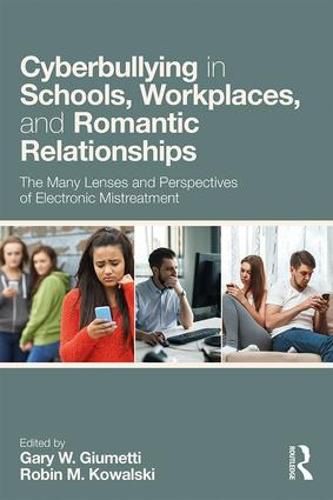Readings Newsletter
Become a Readings Member to make your shopping experience even easier.
Sign in or sign up for free!
You’re not far away from qualifying for FREE standard shipping within Australia
You’ve qualified for FREE standard shipping within Australia
The cart is loading…






This volume brings together research on cyberbullying across contexts, age groups, and cultures to gain a fuller perspective of the prevalence and impact of electronic mistreatment on individual, group, and organizational outcomes. This is the first book to integrate research on cyberbullying across three contexts: schools, workplaces, and romantic relationships, providing a unique synthesis of lifespan contexts. For each context, the expert chapter authors bring together three different ‘lenses’: existing research on the predictors and outcomes of cyberbullying within that context; a cross-cultural review across national borders and cultural boundaries; and a developmental perspective that examines age-related differences in cyberbullying within that context. The book closes by drawing commonalities across these different contexts leading to a richer understanding of cyberbullying as a whole and some possible avenues for future research and practice. This is fascinating reading for researchers and upper-level students in social psychology, counseling, school psychology, industrial-organizational psychology, and developmental psychology, as well as educators and administrators.
$9.00 standard shipping within Australia
FREE standard shipping within Australia for orders over $100.00
Express & International shipping calculated at checkout
This volume brings together research on cyberbullying across contexts, age groups, and cultures to gain a fuller perspective of the prevalence and impact of electronic mistreatment on individual, group, and organizational outcomes. This is the first book to integrate research on cyberbullying across three contexts: schools, workplaces, and romantic relationships, providing a unique synthesis of lifespan contexts. For each context, the expert chapter authors bring together three different ‘lenses’: existing research on the predictors and outcomes of cyberbullying within that context; a cross-cultural review across national borders and cultural boundaries; and a developmental perspective that examines age-related differences in cyberbullying within that context. The book closes by drawing commonalities across these different contexts leading to a richer understanding of cyberbullying as a whole and some possible avenues for future research and practice. This is fascinating reading for researchers and upper-level students in social psychology, counseling, school psychology, industrial-organizational psychology, and developmental psychology, as well as educators and administrators.